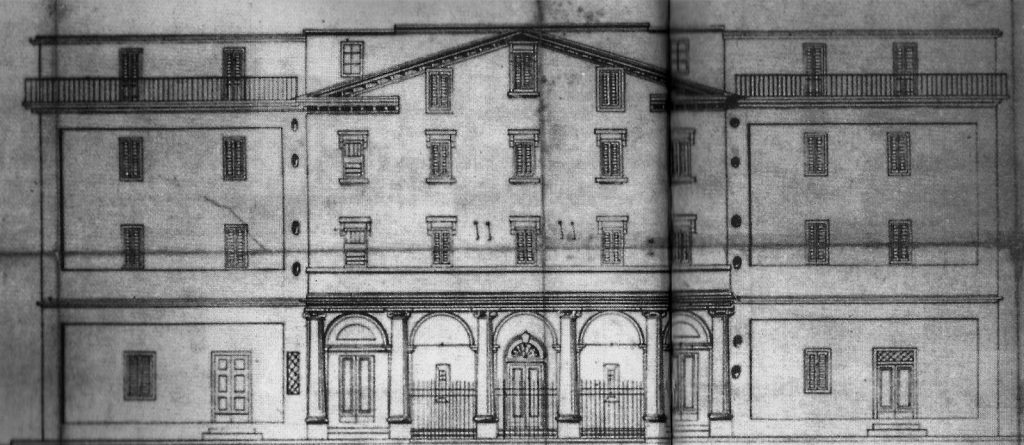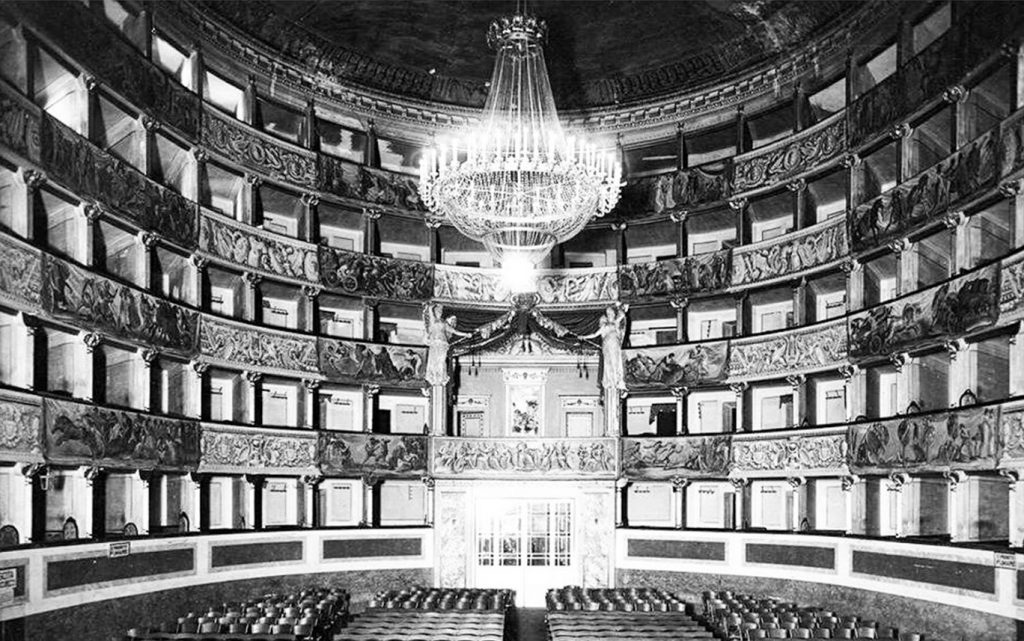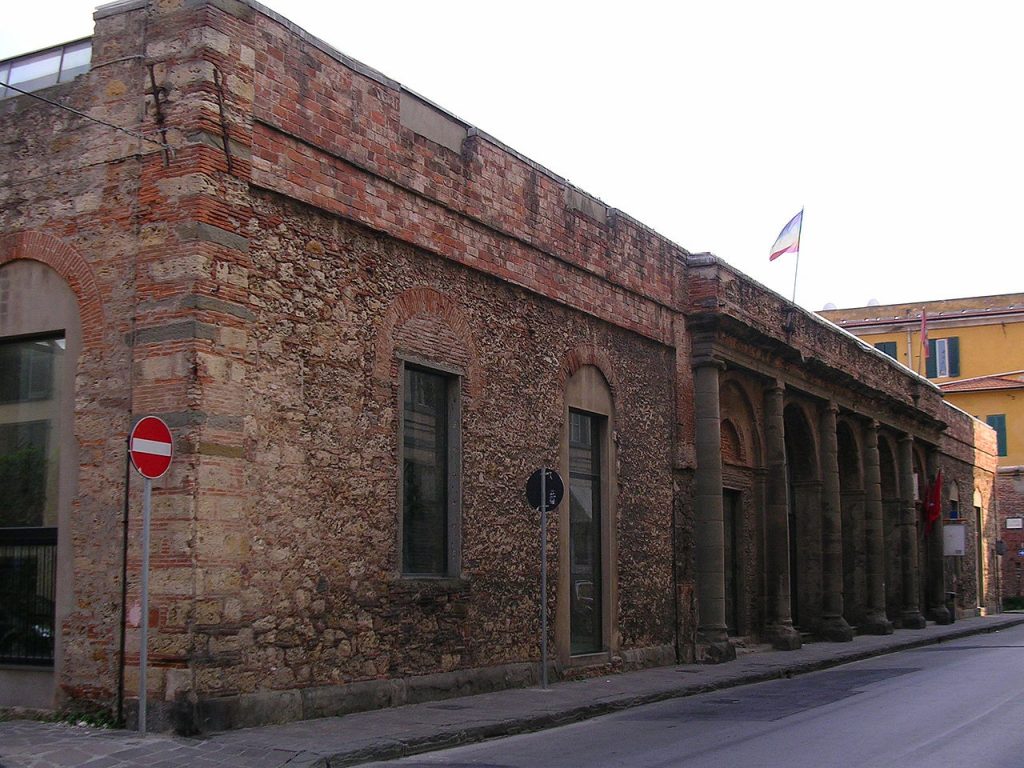La costruzione del Teatro San Marco risale ai primi anni del XIX secolo quando Luigi Gragnani pubblicò il progetto per la realizzazione di un teatro nella zona del Rivellino di San Marco, a breve distanza dal quartiere della Venezia Nuova e dalla chiesa e convento di Santa Caterina. Il progetto fu affidato a Salvatore Piccioli coadiuvato da Gaspero Pampaloni ed i lavori, iniziati nel 1803, furono rapidamente portati a termine, tanto che il 27 aprile 1806 il teatro fu solennemente inaugurato col nome di Carlo Lodovico, figlio della regina d’Etruria Maria Luisa di Borbone-Spagna, con l’opera “I baccanali di Roma” di Stefano Pavesi.
Nel 1852 fu restaurato da Giuseppe Cappellini, la cui fama era legata al compimento del Teatro Goldoni; tuttavia l’edificio andò incontro ad un rapido degrado, tanto è vero che, all’inizio del Novecento lo storico Giuseppe Piombanti ne segnalava lo stato di abbandono ed incuria.
The construction of the San Marco Theater dates back to the early nineteenth century when Luigi Gragnani published the project for the construction of a theater in the Rivellino di San Marco area, a short distance from the Venezia Nuova district and the church and convent of Santa Caterina. The project was entrusted to Salvatore Piccioli assisted by Gaspero Pampaloni and the works, begun in 1803, were quickly completed, so much so that on 27 April 1806 the theater was solemnly inaugurated with the name of Carlo Lodovico, son of the Queen of Etruria Maria Luisa of Bourbon-Spain, with the work “I bacchanalia of Rome” by Stefano Pavesi.
In 1852 it was restored by Giuseppe Cappellini, whose fame was linked to the completion of the Goldoni Theater; however the building underwent a rapid deterioration, so much so that, at the beginning of the twentieth century, the historian Giuseppe Piombanti reported its state of neglect and neglect.
Nel 1921, il Teatro San Marco ospitò il congresso costitutivo da cui sarebbe nato il Partito Comunista d’Italia, ma a testimonianza del pessimo stato in cui versava l’edificio, i partecipanti dovettero aprire gli ombrelli anche all’interno della sala, a causa di notevoli infiltrazioni d’acqua piovana.
Ritornò in auge durante il fascismo, ma i bombardamenti della seconda guerra mondiale lo danneggiarono gravemente.
nel dopoguerra il San Marco fu così demolito, malgrado l’annesso Casino, un tempo sede dell’accademia del teatro, fosse ancora agibile. Della storica struttura, inglobata in anni più recenti in un moderno complesso scolastico, sono stati conservati soltanto alcuni ruderi dei muri perimetrali e parte del registro inferiore della facciata.
In 1921, the San Marco Theater hosted the constitutive congress from which the Communist Party of Italy was born, but as evidence of the bad state of the building, the participants had to open the umbrellas also inside the hall, due to of significant rainwater infiltrations.
It came back into vogue during Fascism, but the bombing of the Second World War seriously damaged it.
in the postwar period, the San Marco was thus demolished, despite the fact that the annexed Casino, once the seat of the theater academy, was still accessible. Of the historic structure, incorporated in more recent years into a modern school complex, only a few ruins of the perimeter walls and part of the lower register of the facade have been preserved.




